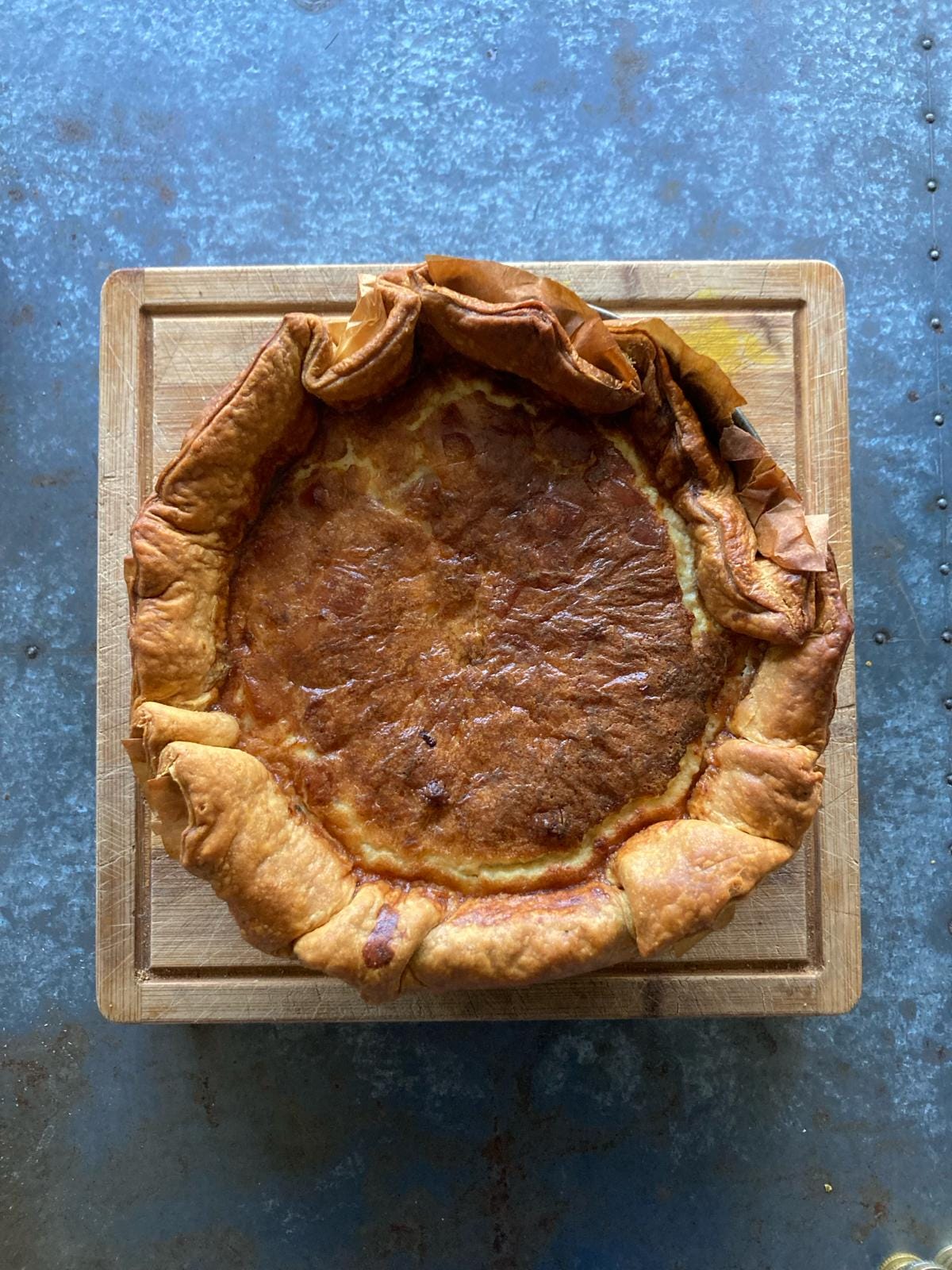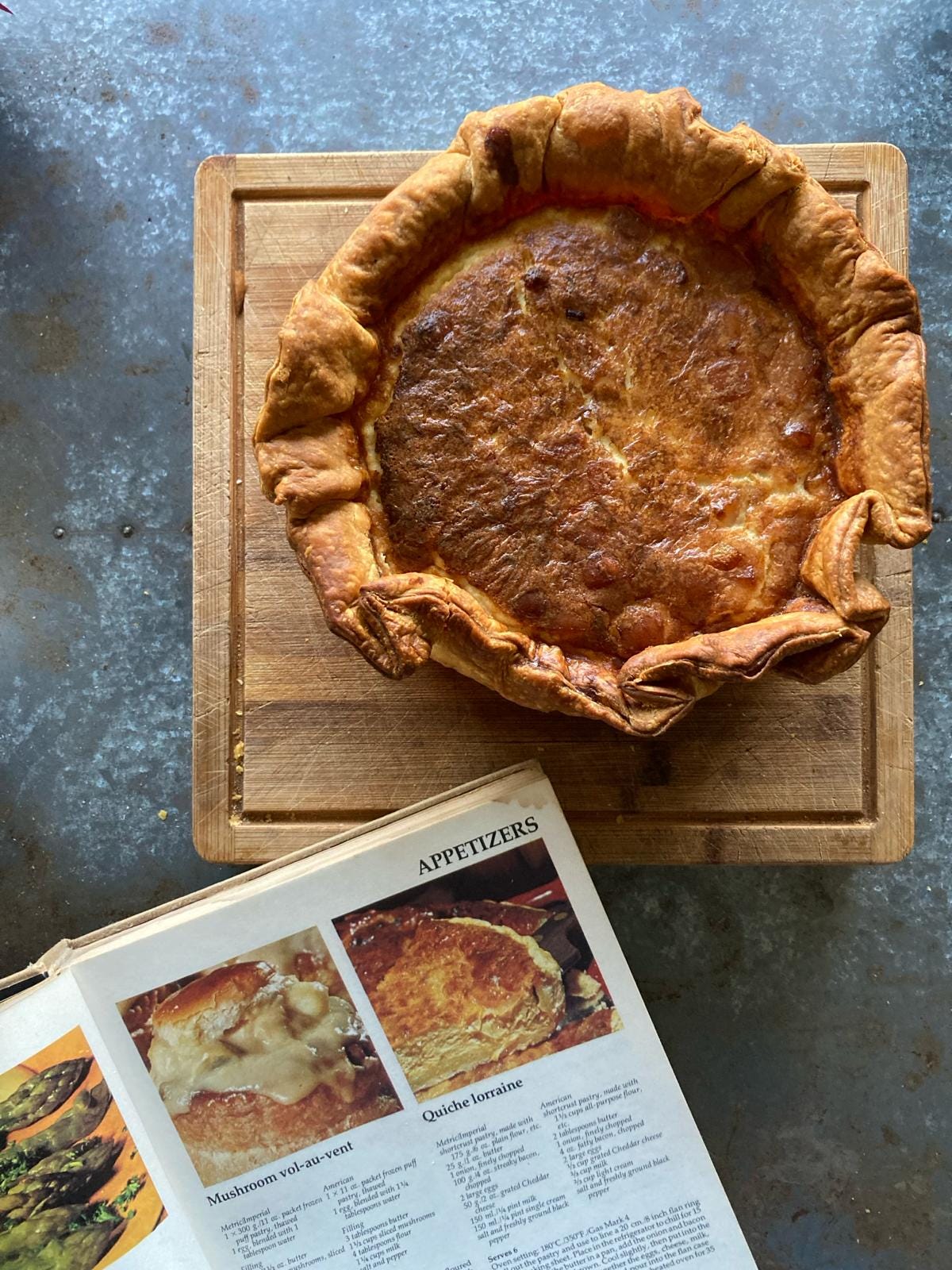There are a handful of books that I credit with sparking my interest in cooking, transforming it from simple pursuit into full blown career obsession. Anthony Bourdain’s A Cook’s Tour, Thomas Keller’s The French Laundry Cookbook, Fergus Henderson’s Nose to Tail Eating, Nigel Slater’s The Kitchen Diaries, Delia Smith’s Complete Cookery Course. They all have a part to play in my journey.
But my love of food and cooking and hospitality goes back a lot further – to a time when seeds were sown without even realising it was happening, without having any inkling which ones might take root, produce shoots, leaves and eventually the sapling of a vocation.
I think it began here: I am about five years old and recently, we have become a family of four – a fresh younger brother coughs and mewls and cries and sleeps, his untamable hair permanently at attention. I have snippets of memories from this time, mainly sensory, as all early memories seem to be. The floor of my bedroom is covered in an itchy, dark green carpet, like coarse moss that irritates my elbows when I’m lying on it and reading. In our living room is an enormous chair, directly in front of the television. It is softer than a marshmallow and covered in gaudy William Morris print, more shades of brown than can possibly exist in a single space. The pattern is both distracting and hypnotic: at some point it would have been highly desirable, and it probably is again. Our kitchen is small and basic. A lightweight cooker with four spiral elements that glow red when they are hot, underneath them an oven and gas grill that rarely gets used, thanks to its propensity to fail to ignite until there is enough gas to remove one’s eyebrows when it finally sparks into life. A varnished pine table with heart shapes carved into the legs. Glossy cork floor tiles. The sink below the window that looks out into the pathway to the garden, where the vast plum tree dominates the top left corner of the garden.
Unlike my own heaving shelves, we only had about five cookbooks in this kitchen. Both my parents (still) cook and love to entertain, and for them that always meant dinner parties. The soundtrack of Saturdays was an orchestral composition that began with the pop of Freixenet corks and rose into a concerto of laughter, raucous delight and what I came to think of as the sound of joy: grown up people eating together, sitting for hours at a table, enjoying food, drink and the company of each other. There are a few dishes that grace my parents’ table with regularity: a spinach and prawn roulade that I know I won’t like. Steak Diane and Napoleon cake that I know I certainly do. These were recipes cut from magazines or carefully copied out in my mum’s distinctive rounded cursive script, all loops and curls: shared, tried and tested links from friends or trusted sources. The cookbooks were rarely consulted and to younger me, without pictures, were virtually impenetrable.
There was one exception: The Complete Colour Cookery Book 300 pages of food, each double page spread adorned with four recipes and to accompany each one, a photograph in glorious technicolour. I don’t know who first suggested it, me or my dad, but it soon became a book we read together with as much enthusiasm as if it were a storybook. The words are almost irrelevant: the pictures and the stories, explanations and discussions these photos initiate are a direct line to countless other worlds. Soon it becomes a game: of the four dishes displayed across each set of pages, you must choose one to eat. Sometimes it is easy, other times difficult either because there is an agony of choice – or because all four sound desperately unpleasant. The offal section proves to be a bridge too far for both of us and we agree that a couple of passes are allowed. There will be no devilled kidneys or tripe french style on our magical menu.
One summer, for my dad’s birthday, my mum and I make pineapple ice cream from the dessert section at the back of the book. As per the photograph’s instructions we serve it in a hollowed out half pineapple, and it remains one of the greatest, most exciting things I’ve ever seen or eaten.
I don’t recall how or when the book appeared in my own kitchen rather than that of my parents. I certainly don’t recall removing it, presumably it was gifted to me at some point: a glorious nostalgic relic from a simpler time, in more ways than one. I put it in my list of 52 Cookbooks for precisely this reason, to reminisce and think about what might have influenced the tiny me to want to explore cooking as a full time job, but also to think about the bigger picture, about how food brings people together in ways more complex and manifold than just around the table.
There are hundreds of recipes from which to choose. Some are adorably terrible, weighed down under a cloud of naivety and half-formed, barely researched or cross-referenced, but that doesn’t seem to matter. It has an inquisitiveness that makes up for it. The index is a chaotic jumble of global accents and flavours, and there are recipes that would make the residents of several (dozen) countries cry out in horror at the crimes being committed in the name of food but, then again, I am staring through a lens shaped by globalism and a world shrunk by the Internet. It’s easy to mock and far harder to applaud – and amongst the mis-steps are a number of timeless gems. Finding something to cook that was true to the spirit in which the book was written and the time at which it came to my attention – and which I knew would be a delight to both create and eat – narrowed down the choices further until just one remained.
Quiche isn’t always a joy. Many travesties of the form sit in banks of supermarket refrigerators, teasing and disappointing with soggy pastry and claggy custard. But fresh from the oven, rich with egg and cream and cheese, the custard blessed with some degree of lateral movement when shaken, a quiche can be a delight. There is nothing not to like about the blessed union of dairy and egg baked into a pastry house. Even cold, straight from the fridge and anointed with a baptism of brown sauce, it is a late night snack to be reckoned with: throw an acerbically dressed salad together on the side for true completion.
Rather than the shallow tart of tradition, I made my Lorraine in a spring form cake tin, blind baking the puff pastry under a weight of coins to prevent it from doing what puff pastry is meant to do whilst I was frying the bacon and softening the onions. A simple custard of eggs, milk and cream, and an indulgent grating of Comté cheese. With a quiche of such extravagant depth, the cooking was lower and slower than perhaps might be expected but, my goodness, was it worth the wait. It could have fed eight: it fed two over a couple of delicious lunchtimes. The 1980s never tasted so good.






So glad you're posting again - thank you. Your cooking is extraordinary, but really, your writing - not too shabby either.